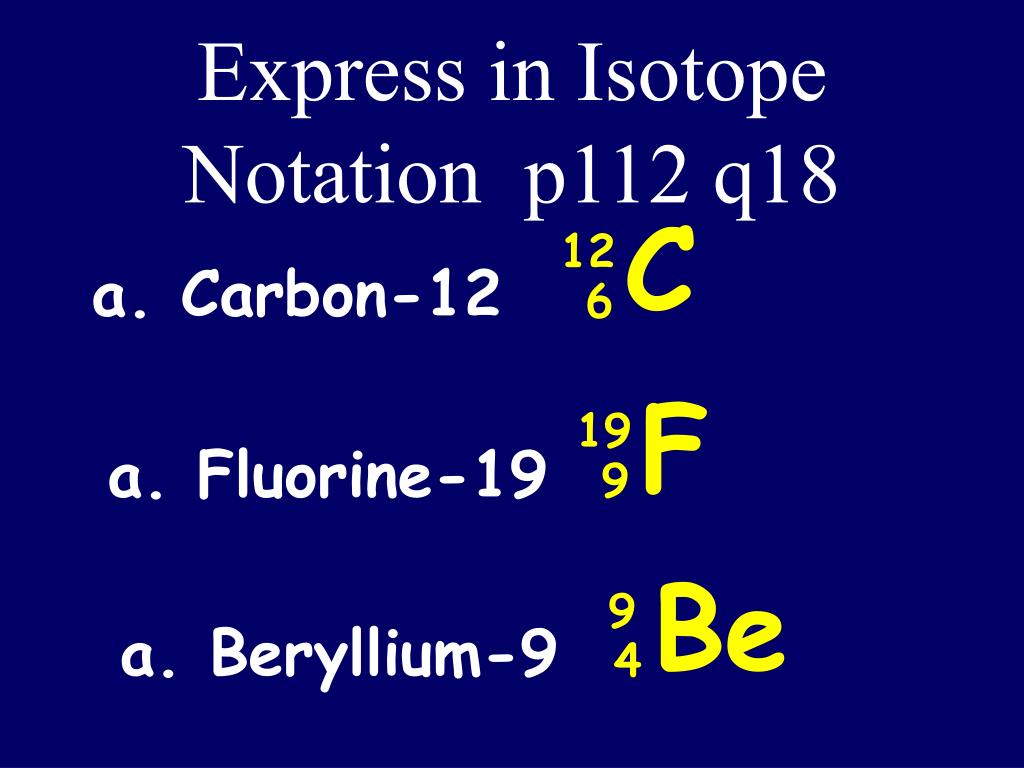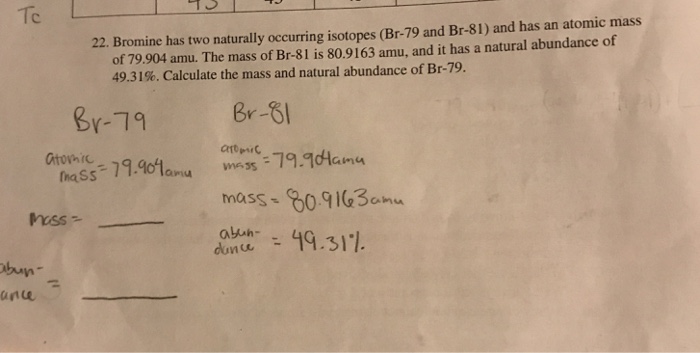Dobereiners’s Triads
Johann Wolfgang Dobereiner was a German chemist. His effort is considered as one of the earliest attempts to classify the elements into groups.

Atomic mass of Bromine is 79.904 u. Note that, each element may contain more isotopes, therefore this resulting atomic mass is calculated from naturally-occuring isotopes and their abundance. The unit of measure for mass is the atomic mass unit (amu). One atomic mass unit is equal to 1.66 x 10 -24 grams. It provides atomic mass, mass excess, nuclear binding energy, nucleon separation energies, Q-values, and nucleon residual interaction parameters for atomic nuclei of the isotope Br-71 (Bromine, atomic number Z = 35, mass number A = 71).
The atomic mass is useful in chemistry when it is paired with the mole concept: the atomic mass of an element, measured in amu, is the same as the mass in grams of one mole of an element. Thus, since the atomic mass of iron is 55.847 amu, one mole of iron atoms would weigh 55.847 grams.
- The average atomic mass of Br is 79.91 u. There are two ways to solve this problem. Method 1 Let's assume we have 10 000 atoms of Br.
- Bromine is an active ingredient in four products; two products with multiple active ingredients and two products as the sole active ingredient. The multiple active ingredient products control mold, mildew, fungi, insects, and odors in exposed surfaces of bedding, mattresses, textiles, drapes, upholstered furniture, rugs, carpets, and storage areas.
The earliest classification categorized elements into metals and non-metals. It was difficult to classify the elements, such as boron, which exhibited the properties of both metals as well as non-metals. After further research a German scientist, Dobereiner arrived at a hypothesis in the year 1829
He found that when elements are arranged into groups of three in the order of their increasing atomic mass, the atomic mass of the element; which comes in the middle; is the arithmetic mean of rest of the two. On this basis, he arranged three elements in one group which is known as ‘Triad’. This arrangement of elements is known as Dobereiner’s Triads.

Dobereiner’s Triads | ||
| Elements and their Atomic Mass | ||
| Lithium (Li) 7.0 | Sodium (Na) 23.0 | Potassium (K) 39.0 |
| Calcium (Ca) 40.0 | Strontium (Sr) 87.5 | Barium (Ba) 137.0 |
| Chlorine (Cl) 35.0 | Bromine (Br) 80.0 | Iodine (I) 127.0 |
In this table, atomic mass of sodium is equal to arithmetic mean of atomic masses of lithium and potassium. Similarly, atomic mass of strontium is equal to arithmetic mean of atomic masses of calcium and barium.
Limitation of Dobereiner’s Triads:
Dobereiner could find only three such triads (group of three elements) and he could not even put all the elements known at that time in his triads.
The rules of Dobereiner’s triads could not be applied to the elements which had very low or high atomic mass. Such as; if F, Cl and Br are put together in a triad, in increasing order of their atomic masses, the atomic mass of Cl is not an arithmetic mean of atomic masses of F and Br.
After the advancement of techniques of measuring atomic mass more correctly Dobereiner’s Law became obsolete.
Newlands’ Law of Octaves:
Newlands found that every eighth element has similar physical and chemical properties when they are arranged in increasing order of their relative masses. This law is known as Newlands’ Law of Octaves which states that “any given element will exhibit analogues behavior to the eighth element following it in the table”. This means every eight element has the similar chemical and physical properties. For example; Sodium is the eighth element from Lithium and both have similar properties.
The arrangement of elements in Newlands’ Octave resembles the musical notes. In musical notes, every eighth note produces similar sound. Because of this; Newland’s classification of elements was popularly known as just Octaves.
Limitation of Newlands’ Octaves:
- Newlands’ Octaves could be valid upto calcium only; as beyond calcium, elements do not obey the rules of Octaves.
- Newlands’ Octaves was valid for lighter elements only.
- It appears that Newlands did not expect the discovery of more elements than 56 which were discovered till his time.
- More than one element had to be placed in some of the groups; in order to place the elements having similar properties in one group. But in order to do so, he also put some dissimilar elements in same group.
- Iron; which has similar property as cobalt and nickel, was placed far from them.
- Cobalt and nickel were placed in the group with chlorine and fluorine in spite of having different properties.
- In spite of above limitations; Newlands was the first scientist who arranged the elements in order of their increasing relative atomic masses.
Atomic Mass and Nuclear Binding Energy for Br-121 (Bromine)
Abstract
This document is part of the Supplement containing the complete sets of data of Subvolume A `Nuclei with Z = 1 - 54' of Volume 22 `Nuclear Binding Energies and Atomic Masses' of Landolt-Börnstein - Group I `Elementary Particles, Nuclei and Atoms'. It provides atomic mass, mass excess, nuclear binding energy, nucleon separation energies, Q-values, and nucleon residual interaction parameters for atomic nuclei of the isotope Br-121 (Bromine, atomic number Z = 35, mass number A = 121).
Br-79 Atomic Mass
Bromine (br) Atomic Mass
Atomic Mass Of Br 81
- Physics;
- Physics;
- general
